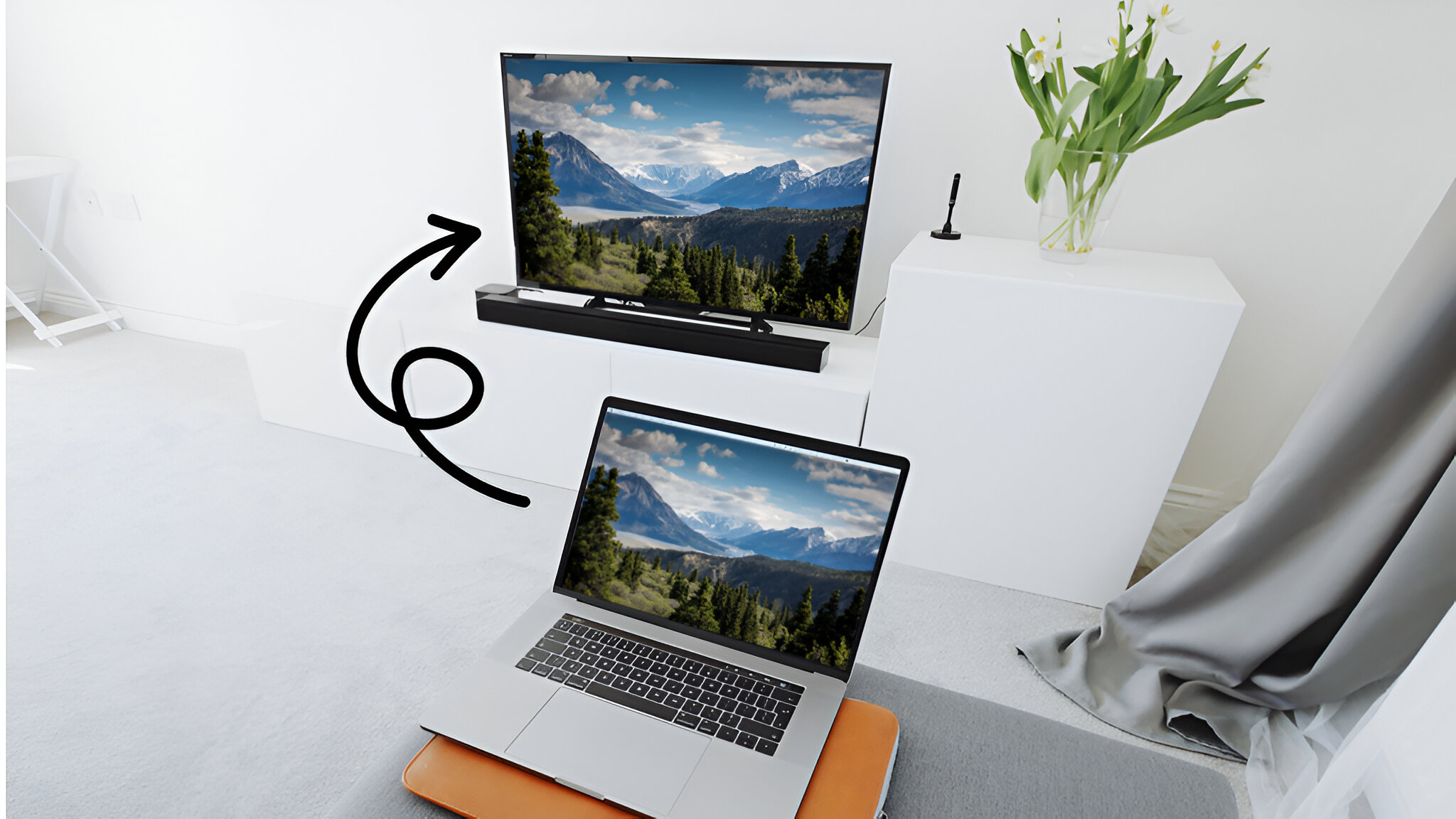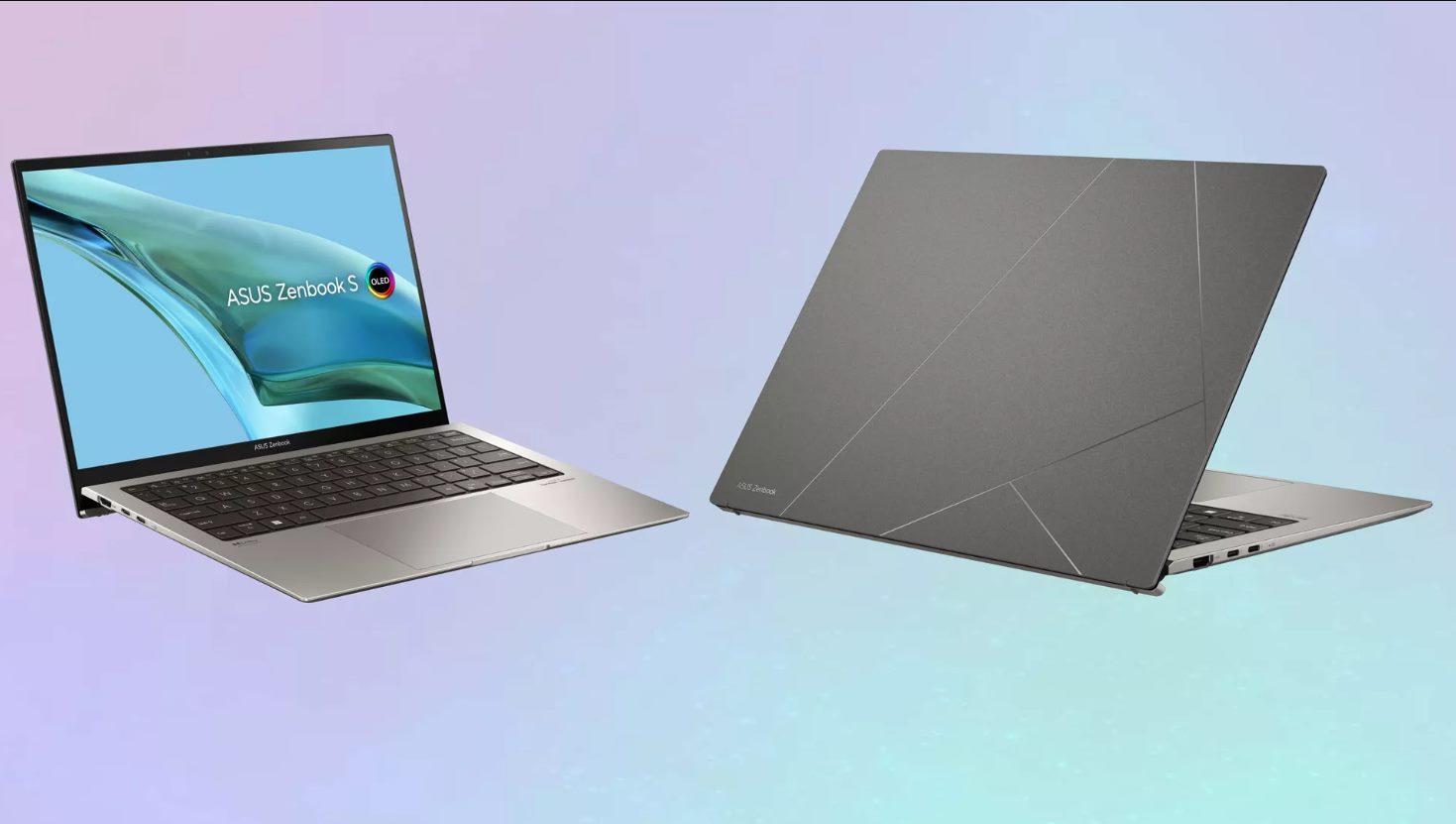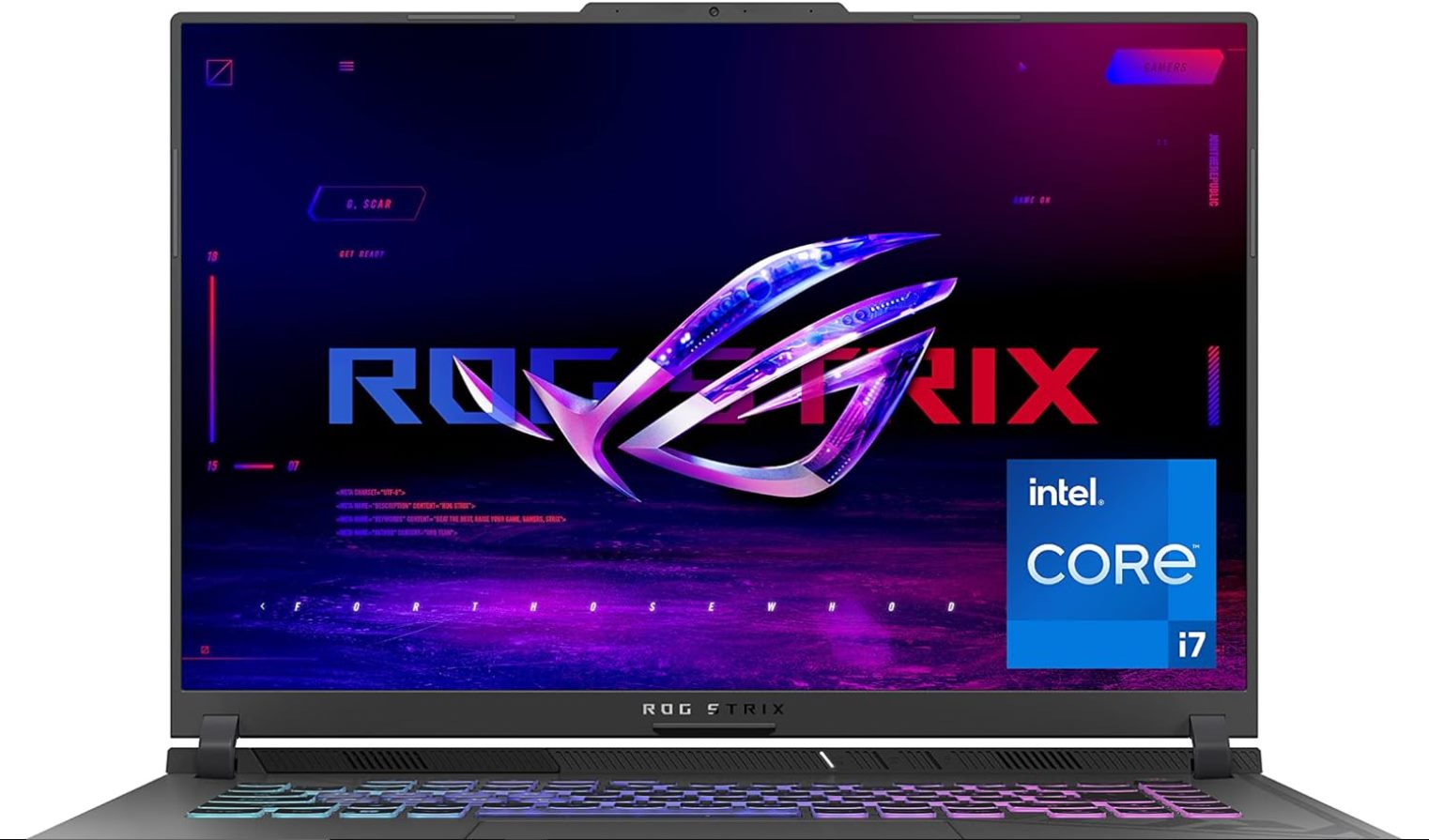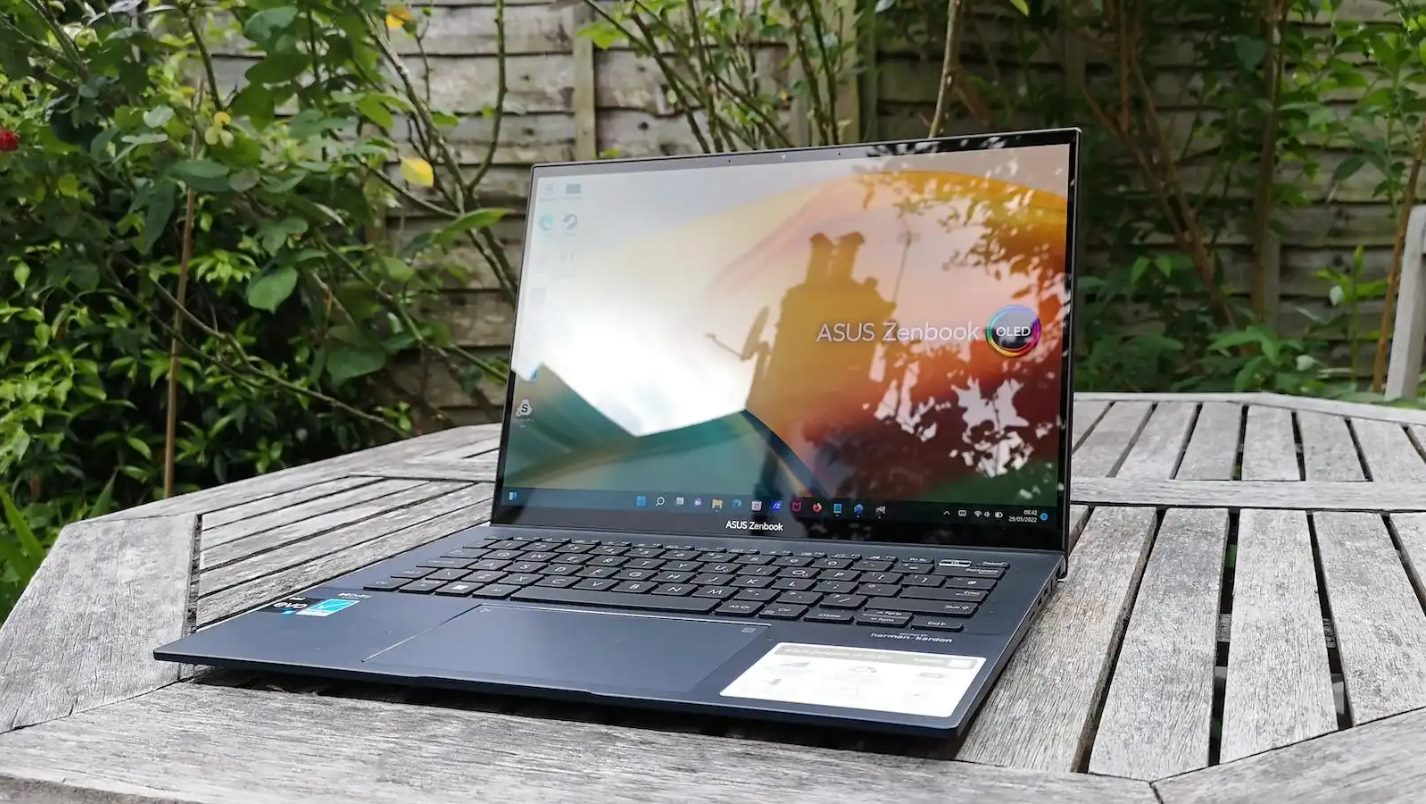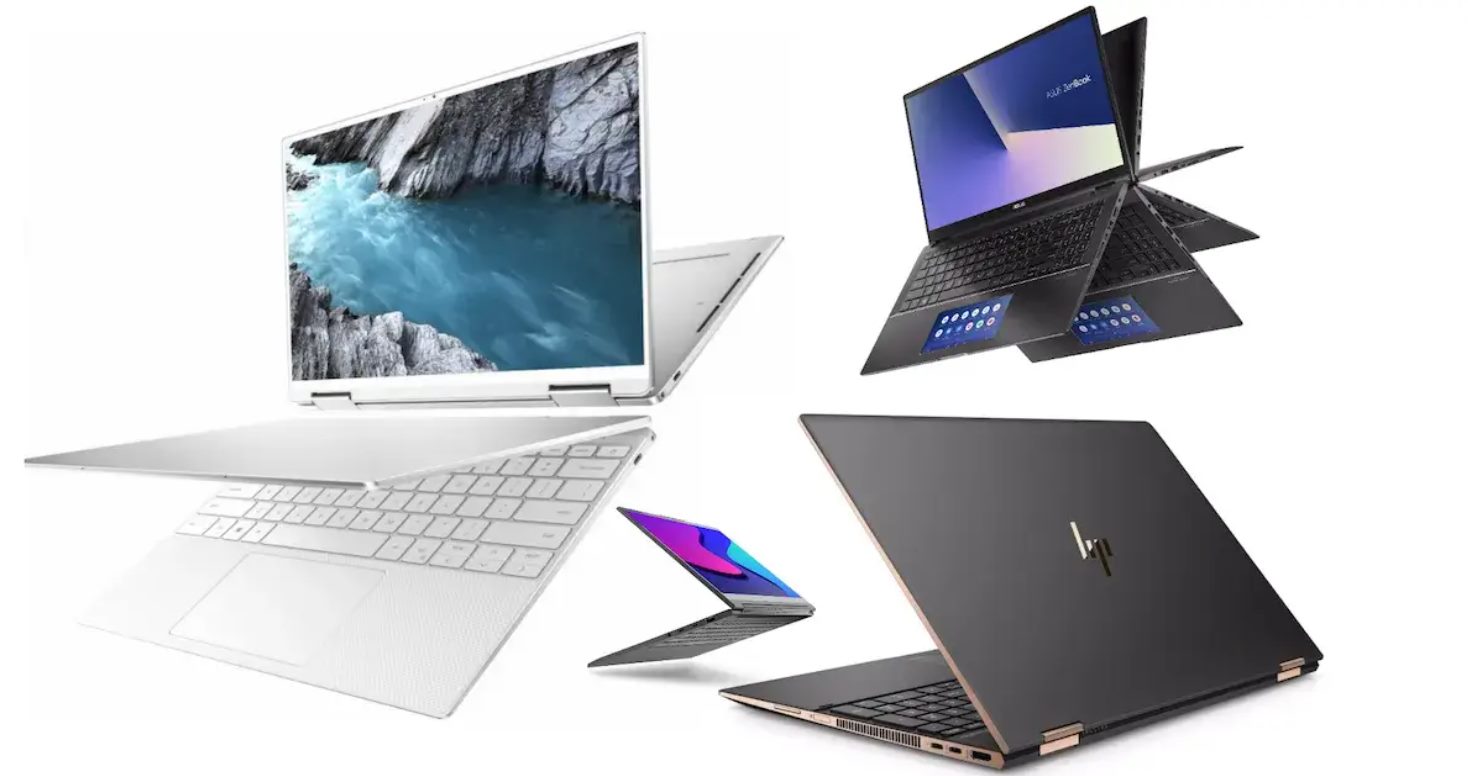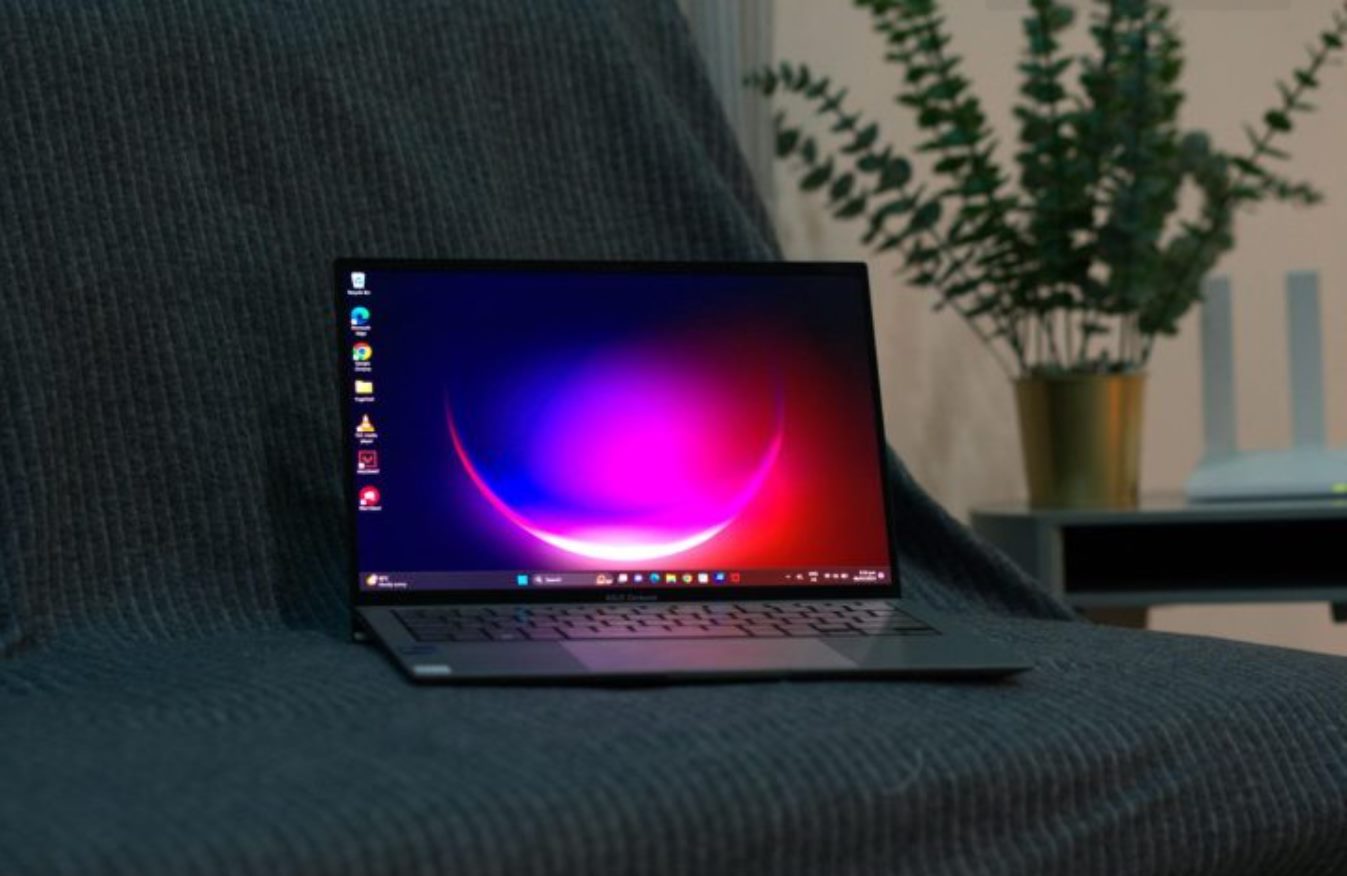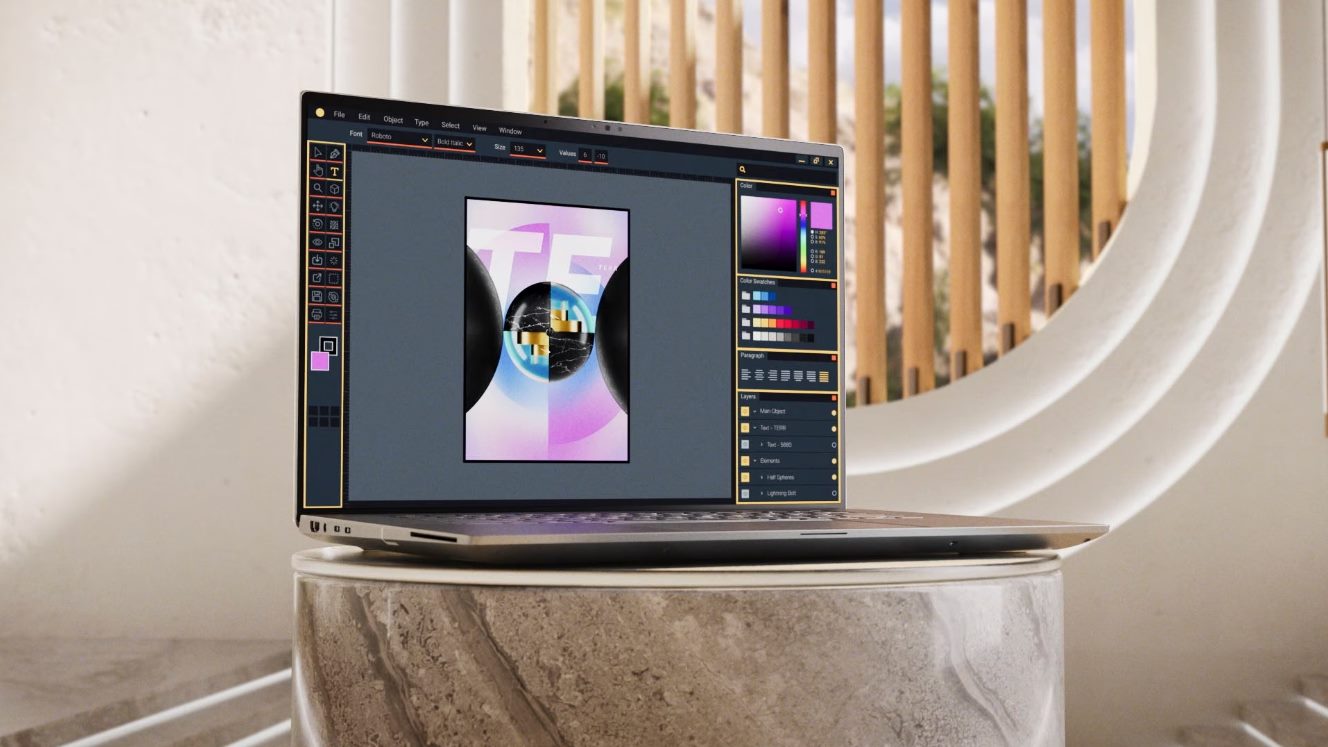Introduction
Welcome to our guide on how to connect your ASUS Ultrabook to an HDMI TV. ASUS Ultrabooks are sleek and lightweight laptops that are perfect for both work and play. With their high-performance processors and stunning displays, they offer a great multimedia experience. One of the most common ways to enhance this experience is by connecting your Ultrabook to a larger screen, such as an HDMI TV. By doing so, you can enjoy movies, videos, photos, and presentations on a bigger and more immersive display.
Connecting your ASUS Ultrabook to an HDMI TV is a relatively straightforward process, but it’s important to understand the basics and follow the correct steps to ensure a successful connection. In this guide, we will walk you through the necessary steps, provide troubleshooting tips for common issues, and offer additional recommendations to enhance your HDMI TV viewing experience.
Before diving into the details of connecting your ASUS Ultrabook to an HDMI TV, let’s take a moment to familiarize ourselves with what an Ultrabook is. Ultrabooks are a type of lightweight and portable laptop developed by Intel. They are known for their slim and stylish designs, powerful performance, and long battery life.
ASUS is a well-respected brand in the world of Ultrabooks, offering a range of models to suit different needs and budgets. Whether you’re a student, professional, or avid gamer, ASUS has an Ultrabook that can meet your requirements.
An HDMI (High Definition Multimedia Interface) TV, on the other hand, is a television that supports HDMI input. HDMI is a widely used interface for transmitting high-quality audio and video signals. It provides a seamless connection and delivers stunning visuals and immersive sound.
Now that we have a basic understanding of what an ASUS Ultrabook and HDMI TV are, let’s move on to the next section, where we will delve into the fundamentals of connecting your ASUS Ultrabook to an HDMI TV.
What is an ASUS Ultrabook?
An ASUS Ultrabook is a type of slim, lightweight laptop that offers a perfect balance between portability and performance. It is designed to provide users with a premium computing experience while maintaining a sleek and stylish profile.
ASUS, a renowned technology company, has been at the forefront of Ultrabook innovation since the concept was introduced by Intel. These Ultrabooks are equipped with the latest hardware and software advancements, making them ideal for a wide range of users, including students, professionals, and even gamers.
One of the defining features of an ASUS Ultrabook is its slim and lightweight form factor. These laptops are crafted with precision and attention to detail, resulting in a device that is both aesthetically pleasing and highly portable. With their slim profiles and compact designs, ASUS Ultrabooks can easily slip into a backpack, briefcase, or even a small handbag, making them perfect for people who are always on the go.
In terms of performance, ASUS Ultrabooks are no slouch either. These devices are powered by high-performance processors, ensuring quick and efficient multitasking capabilities. Whether you’re working on complex spreadsheets, editing high-resolution videos, or playing graphics-intensive games, an ASUS Ultrabook can handle it with ease.
Furthermore, ASUS Ultrabooks feature vibrant and sharp displays that offer an immersive viewing experience. Whether you’re watching movies, editing photos, or browsing the web, the visuals on an Ultrabook’s screen are crisp and detailed.
Another key aspect of ASUS Ultrabooks is their exceptional battery life. Thanks to efficient power management technologies, these laptops can last for hours on a single charge, allowing you to work, play, or browse the web without worrying about running out of battery power.
Additionally, ASUS Ultrabooks come with a wide range of connectivity options, including USB ports, headphone jacks, and, importantly for this guide, HDMI ports. The inclusion of an HDMI port enables you to connect your Ultrabook to external displays, such as HDMI TVs, for an enhanced viewing experience.
With their sleek design, powerful performance, and versatile features, ASUS Ultrabooks provide a perfect blend of style and functionality. They are a popular choice among tech enthusiasts who value both aesthetics and performance in their computing devices.
Now that we have a clear understanding of what an ASUS Ultrabook is, let’s move on to the next section, where we will explore the basics of HDMI TVs and the benefits of connecting an Ultrabook to one.
HDMI TV Basics
An HDMI TV, or High Definition Multimedia Interface TV, is a television that supports the HDMI input. HDMI is a widely-used interface for transmitting high-definition audio and video signals. It is known for its ability to deliver pristine picture quality and immersive audio.
There are several benefits to using an HDMI TV, which is why it has become the standard for connecting electronic devices to televisions. Here are some of the key advantages:
- Superior Audio and Video Quality: HDMI provides a seamless and uncompressed digital connection, resulting in the transmission of high-quality audio and video signals. This means that you can enjoy crystal-clear visuals and immersive sound when watching movies, playing games, or streaming content.
- Easy and Convenient Connection: HDMI cables are widely available and easy to use. They typically have a simple plug-and-play design, allowing you to connect your ASUS Ultrabook and HDMI TV effortlessly. With just a single cable, you can transmit both audio and video signals, eliminating the need for messy and complicated wire setups.
- Compatibility: HDMI is a universal standard that is supported by most modern electronic devices, including laptops, gaming consoles, Blu-ray players, and more. This means that you can easily connect a wide range of devices to your HDMI TV, ensuring versatility and convenience.
- Multiple Audio and Video Streams: HDMI supports the transmission of multiple audio and video streams simultaneously. This feature is particularly useful for connecting devices that have multiple audio and video outputs, such as a home theater system or a set-top box.
- Control Features: HDMI also allows for the transmission of control signals, enabling you to control multiple devices using a single remote control. This simplifies the overall user experience and eliminates the need for multiple remotes cluttering up your entertainment setup.
When it comes to HDMI TVs, it’s important to ensure that the TV has an HDMI input port. This port will usually be labeled as “HDMI” or have the HDMI logo next to it. Most modern TVs come equipped with multiple HDMI ports, allowing you to connect multiple devices simultaneously.
It’s worth noting that there are different versions of HDMI, such as HDMI 1.4 and HDMI 2.0, with each version offering specific features and capabilities. However, for the purpose of connecting your ASUS Ultrabook to an HDMI TV, any HDMI version should work seamlessly.
Now that we’ve covered the basics of HDMI TVs, let’s move on to the next section, where we will guide you through the process of connecting your ASUS Ultrabook to an HDMI TV.
Connecting Your ASUS Ultrabook to HDMI TV
Connecting your ASUS Ultrabook to an HDMI TV is a straightforward process that involves a few simple steps. Here’s a step-by-step guide to help you get started:
- Check the HDMI Ports: Start by examining both your ASUS Ultrabook and your HDMI TV to locate the HDMI ports. The Ultrabook will typically have an HDMI output port, while the TV will have an HDMI input port. Depending on the model, your Ultrabook may have a full-size HDMI port or a smaller HDMI micro or mini port. Make sure to identify the correct ports on both devices before proceeding.
- Prepare the HDMI Cable: Next, you’ll need an HDMI cable to connect your Ultrabook to the TV. Choose a cable length that suits your setup. HDMI cables come in different lengths, so pick one that allows for comfortable positioning of your Ultrabook and TV without any tension on the cable.
- Connect the HDMI Cable: Take one end of the HDMI cable and insert it into the HDMI output port on your ASUS Ultrabook. The cable should fit snugly into the port. Then, take the other end of the cable and insert it into an available HDMI input port on your TV.
- Select the Correct HDMI Input: Turn on your HDMI TV and use the TV remote to navigate to the input/source selection menu. From there, choose the HDMI input to which you connected your Ultrabook. This will vary depending on your TV model, but it’s typically labeled as HDMI 1, HDMI 2, etc.
- Adjust Display Settings: Once the HDMI input is selected, your Ultrabook’s screen should be mirrored or extended onto the TV display. However, if nothing appears on the TV screen, you may need to adjust the display settings on your Ultrabook. Go to the display settings in the control panel or system settings of your operating system, and ensure that the correct display mode (mirror or extend) and resolution are selected for the HDMI output.
- Enjoy Your Ultrabook on the HDMI TV: With the connection established and the display settings adjusted, you can now enjoy your ASUS Ultrabook’s content on the larger HDMI TV screen. Whether you’re streaming movies, playing games, or giving presentations, the HDMI TV will provide a more immersive experience.
Once you have successfully connected your ASUS Ultrabook to an HDMI TV, you can also control the audio settings. By default, the audio should be transmitted through the HDMI cable and played through the TV’s speakers. However, if you want to use external speakers or headphones, you may need to adjust the audio output settings on your Ultrabook.
It’s important to note that the specific steps for connecting your Ultrabook to an HDMI TV may vary slightly depending on your Ultrabook model and TV brand. Always refer to the user manuals or online support guides for detailed instructions if needed.
Now that you know how to connect your ASUS Ultrabook to an HDMI TV, we will address some common troubleshooting issues in the next section to help you overcome any potential obstacles.
Troubleshooting Common Issues
While connecting your ASUS Ultrabook to an HDMI TV is generally a straightforward process, you may encounter some common issues along the way. Here are a few troubleshooting tips to help you overcome these challenges:
- No Signal on HDMI TV: If you’re not getting a signal on your HDMI TV, double-check that both ends of the HDMI cable are securely plugged in. Additionally, ensure that you have selected the correct HDMI input on your TV using the remote control.
- Display Issues: If you’re experiencing display issues, such as a blank or distorted screen, check that the display settings on your Ultrabook are configured correctly. Make sure the display mode is set to “Extend” or “Duplicate,” and the resolution is compatible with your HDMI TV.
- No Audio: If you’re not getting audio through your HDMI TV speakers, verify that the audio output is set to HDMI on your Ultrabook. Go to the sound settings and select the HDMI output as the default audio device. You can also check if the TV volume is not muted and turned up.
- HDCP Error: HDCP (High-Bandwidth Digital Content Protection) is a security feature that prevents unauthorized copying of copyrighted content. If you encounter an HDCP error message on your HDMI TV, try reconnecting the HDMI cable or using a different HDMI port on the TV. If the issue persists, ensure that your Ultrabook and HDMI TV both support HDCP.
- Outdated Drivers: Outdated or incompatible graphics drivers can cause connectivity issues. To resolve this, update the graphics drivers on your Ultrabook to the latest version. Visit the ASUS support website or the graphics card manufacturer’s website to download and install the appropriate drivers.
- Unsupported Resolutions: Some HDMI TVs may have limitations on the supported resolutions. If you’re encountering resolution issues, try adjusting the display settings on your Ultrabook to a supported resolution that matches your TV’s capabilities.
If you’ve gone through these troubleshooting steps and are still experiencing issues, it’s recommended to consult the user manual for your ASUS Ultrabook or HDMI TV. Additionally, contacting the customer support of ASUS or the TV manufacturer can provide you with further assistance and troubleshooting guidance specific to your devices.
Now that we’ve covered some common troubleshooting issues, let’s move on to the final section, where we will provide additional tips and recommendations for enhancing your HDMI TV experience with your ASUS Ultrabook.
Additional Tips and Recommendations
Now that you’ve successfully connected your ASUS Ultrabook to an HDMI TV, here are some additional tips and recommendations to enhance your viewing experience:
- Use External Speakers or Soundbar: While HDMI TVs have built-in speakers, they may not always deliver the best audio quality. Consider using external speakers or a soundbar for an enhanced sound experience. Connect them to your Ultrabook for a more immersive audio experience.
- Optimize Display Settings: Take advantage of your Ultrabook’s display settings to fine-tune the visuals on the HDMI TV. Adjust brightness, contrast, and color settings to optimize the picture quality according to your preferences.
- Utilize Dual Monitor Mode: If you’re using your HDMI TV as an extended display, make use of the dual monitor mode. This allows you to multitask, view content on both screens simultaneously, and extend your Ultrabook’s workspace.
- Wireless Connectivity: Consider using wireless HDMI solutions if you prefer a cable-free setup. Wireless HDMI transmitters and receivers can transmit audio and video signals to your HDMI TV without the need for physical connections.
- Manage Power Settings: Streaming content, playing games, or running intensive applications on your Ultrabook may drain the battery quickly. To optimize battery life, adjust your power settings or connect your Ultrabook to a power source while using it with an HDMI TV.
- Keep Drivers Up to Date: Regularly update your Ultrabook’s graphics drivers and firmware to ensure optimal performance and compatibility with your HDMI TV. Visit the ASUS support website regularly to check for driver updates.
- Explore HDMI TV Features: HDMI TVs often come with various features and options. Take the time to explore the settings and capabilities of your TV, such as picture modes, motion enhancement, and audio settings, to customize your viewing experience further.
- Disconnect Properly: When you’re finished using your ASUS Ultrabook with the HDMI TV, remember to disconnect the HDMI cable properly. Avoid pulling the cable forcefully or abruptly removing it to prevent any damage to the ports.
By following these additional tips and recommendations, you can make the most out of your ASUS Ultrabook and HDMI TV setup. Whether you’re working, gaming, or enjoying multimedia content, the connection between your Ultrabook and HDMI TV will provide an immersive and enjoyable experience.
With all the information covered in this guide, you should now have the knowledge and confidence to connect your ASUS Ultrabook to an HDMI TV successfully. Enjoy your enhanced viewing experience and make the most of your multimedia content on the big screen!
Conclusion
In this guide, we have explored how to connect your ASUS Ultrabook to an HDMI TV, allowing you to enjoy a larger and more immersive viewing experience. We started by understanding what an ASUS Ultrabook is, highlighting its slim and lightweight design, powerful performance, and stunning display capabilities.
We then delved into the basics of HDMI TVs, discussing the benefits of using an HDMI TV and the advantages of the HDMI interface in delivering high-quality audio and video signals. We also covered the different versions of HDMI and the importance of ensuring your TV has an HDMI input port.
Next, we provided a step-by-step guide on connecting your ASUS Ultrabook to an HDMI TV, highlighting the importance of checking the HDMI ports, preparing the HDMI cable, and adjusting the display settings to ensure a successful connection. We also addressed common troubleshooting issues that you may encounter and suggested solutions for each one.
Additionally, we offered some additional tips and recommendations to enhance your HDMI TV experience, such as using external speakers, optimizing display settings, utilizing dual monitor mode, considering wireless connectivity options, and keeping drivers up to date.
By following the steps outlined in this guide and implementing the recommendations, you can fully enjoy the capabilities of your ASUS Ultrabook connected to an HDMI TV. Whether you’re streaming movies, playing games, giving presentations, or simply enjoying multimedia content, the larger screen and enhanced audio will offer a more immersive and enjoyable experience.
Remember to consult the user manuals or online support guides for your specific Ultrabook and HDMI TV if you encounter any difficulties along the way. The customer support of ASUS and TV manufacturers can also provide additional assistance and guidance.
Now that you have all the information and guidance needed, it’s time to connect your ASUS Ultrabook to an HDMI TV and unlock a whole new level of multimedia enjoyment. Enjoy your enhanced viewing experience and make the most of your Ultrabook’s capabilities!







